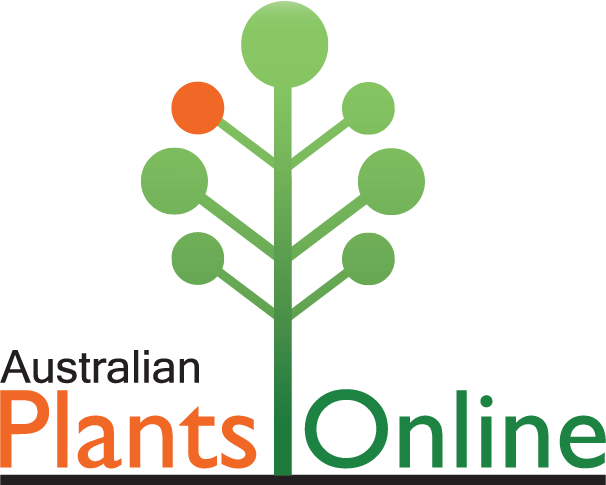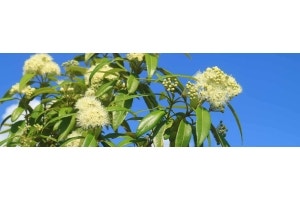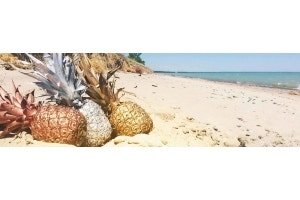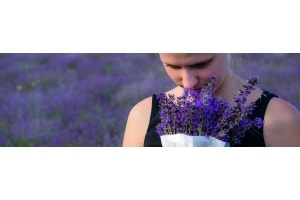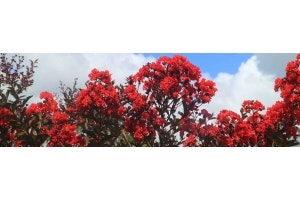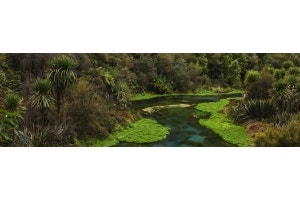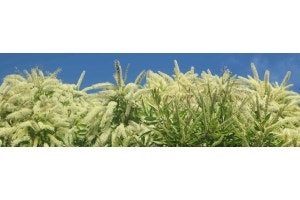
Many Australian native plants evolved in very poor, dry, ancient soils which are low in mineral and organic matter. As a result they have adapted to grow best with low nutrient needs, especially for the element phosphorus. This is especially true of those natives from the red centre, southern sandstone regions, and most of Western Australia
 If you read the side of a commercially-produced fertiliser packet, tub, or bottle, you’ll see three key letters – NPK – and a number or percentage beside them. P stands for Phosphorus, commonly known as phosphate. The numbers or percentages beside the letters show the balance of key nutrients in the fertiliser; the higher the number, the more of that nutrient the fertiliser contains.
If you read the side of a commercially-produced fertiliser packet, tub, or bottle, you’ll see three key letters – NPK – and a number or percentage beside them. P stands for Phosphorus, commonly known as phosphate. The numbers or percentages beside the letters show the balance of key nutrients in the fertiliser; the higher the number, the more of that nutrient the fertiliser contains.
Easy-going natives generally include those from rainforest regions, and the Myrtaceae family. The following natives have been shown to be sensitive to phosphorus and will benefit from low-P fertilisers or those formulated for native plants :

 If you read the side of a commercially-produced fertiliser packet, tub, or bottle, you’ll see three key letters – NPK – and a number or percentage beside them. P stands for Phosphorus, commonly known as phosphate. The numbers or percentages beside the letters show the balance of key nutrients in the fertiliser; the higher the number, the more of that nutrient the fertiliser contains.
If you read the side of a commercially-produced fertiliser packet, tub, or bottle, you’ll see three key letters – NPK – and a number or percentage beside them. P stands for Phosphorus, commonly known as phosphate. The numbers or percentages beside the letters show the balance of key nutrients in the fertiliser; the higher the number, the more of that nutrient the fertiliser contains.
Many Australian native plants - especially acacia, banksia, hakea - don’t like all-purpose fertilisers that have a lot of phosphate. Look for a low or zero P number, or a specialist native fertiliser, to feed these native plants with, and they'll stay healthier for longer.
Not all Australian natives are fussy about their nutrient needs and you can feed those with your preferred all-purpose plant food.
Easy-going natives generally include those from rainforest regions, and the Myrtaceae family. The following natives have been shown to be sensitive to phosphorus and will benefit from low-P fertilisers or those formulated for native plants :
Fussy about Phosphorus
- Acacia species, especially baileyana - Cootamundra wattle; iteaphylla - Flinders Range wattle
- Banksia species, especially ericifolia - heath banksia; integrifolia - coastal banksia; oblongifolia - fern-leaf banksia;
- Crotalaria cunninghamii - green birdflower
- Dodonaea viscosa - sticky hop bush
- Grevillea species, especially banksii, incl. - silky oak; Pink Surprise; and Ruby Red
- Grevillea species, especially thelemanniana, incl - Red Wings; Mini Marvel
- Hakea species incl. laurina - pincushion hakea; willow leaf hakea
- Hardenbergia violacea - purple coral pea

Check your soil and water too
If you find a native plant in your garden is not looking very healthy, or growing slowly despite feeding, it might be worth changing the plant food you use to a low phosphorus one. But that doesn't always solve the problem.
- Sometimes too much calcium in the soil or water can stop sensitive native plants absorbing nutrients, so testing your soil and water for nutrient levels and pH balance may be advisable.
- Calcium-rich soils are usually alkaline, ie they have a high pH level.
- Iron-rich soils can help native plants take up phosphorus, as they are often soils with low pH levels, ie 'acid'.
-
Soils mulched with lots of post-farm waste organic matter, like chicken pellets or horse manure, can become very rich in phosphates regardless of the underlying soil type.
Avoid planting new natives into heavily fertilised soils that used to grow vegetables, for the same reason. - Watering phosphorus-rich soils with chelated iron solution or ferrous sulphate can sometimes improve the plant's ability to take up nutrients.
